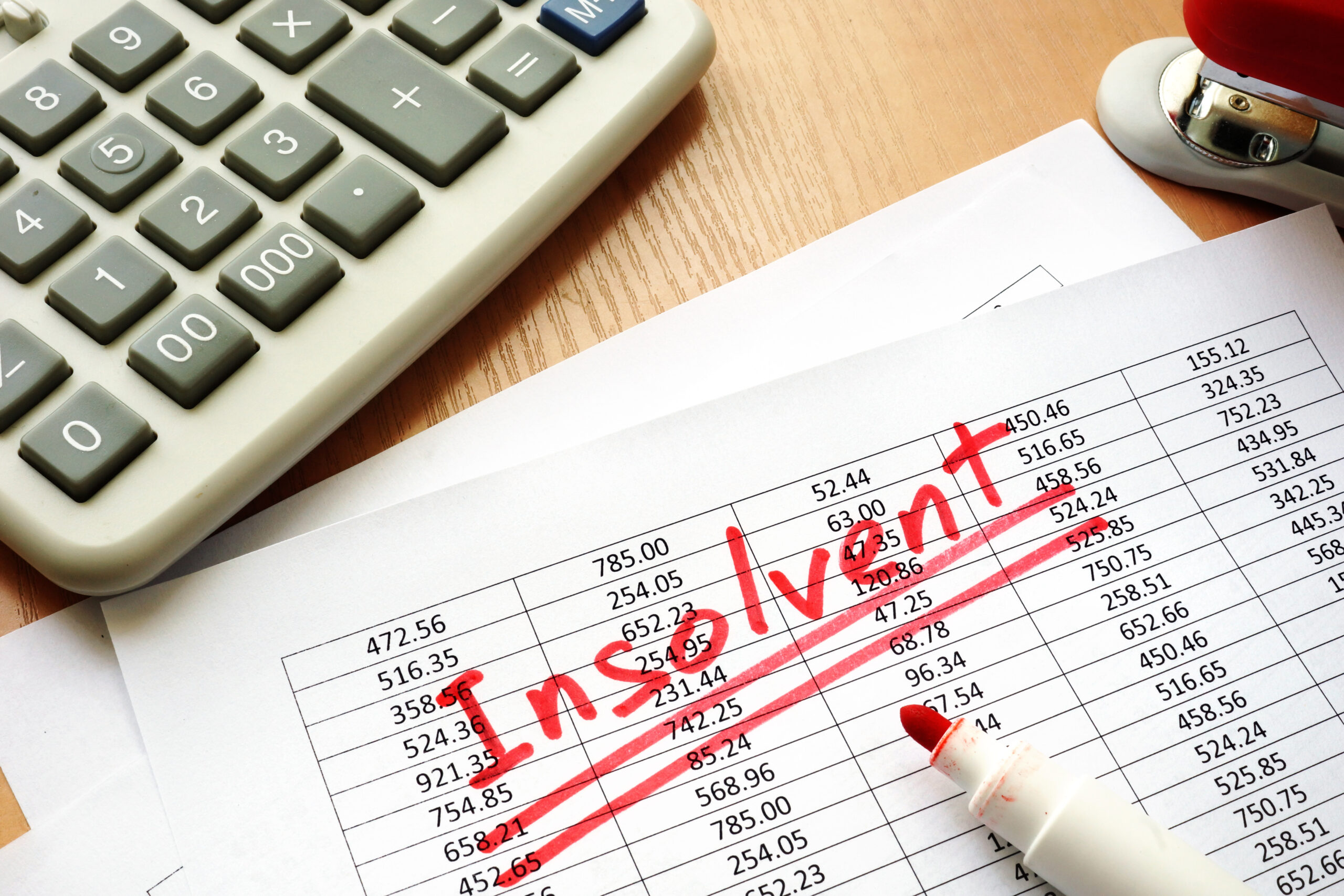An Unbiased View of Insolvency Practitioner
An Unbiased View of Insolvency Practitioner
Blog Article
The Ultimate Guide To Insolvency Practitioner
Table of ContentsSome Known Questions About Insolvency Practitioner.Insolvency Practitioner Fundamentals ExplainedThe Single Strategy To Use For Insolvency PractitionerMore About Insolvency PractitionerInsolvency Practitioner - The FactsInsolvency Practitioner - TruthsHow Insolvency Practitioner can Save You Time, Stress, and Money.
Insolvency is when obligations are higher than the worth of the firm, or when a borrower can not pay the debts they owe. A company can come to be bankrupt due to a variety of situations that result in inadequate capital. When confronted with insolvency, a service or individual can get in touch with lenders directly and restructure financial obligations to pay them off.Service owners may speak to lenders directly and restructure debts into more convenient installments. Financial institutions are normally open to this method because they desire to be paid back and stay clear of losses, even if the repayment is on a postponed schedule.
The Single Strategy To Use For Insolvency Practitioner
The owner develops a proposal detailing exactly how the financial debt might be restructured using expense reductions or other prepare for assistance. The proposition shows financial institutions exactly how the company may produce enough cash money flow for rewarding procedures while paying its financial debts. Commonly, a forgiven financial debt might be taken into consideration revenue by the Internal Revenue Service (IRS).

Not known Details About Insolvency Practitioner
The organization may wind up paying huge amounts of cash in problems and be overcome operations. When procedures discontinue, so does the company's income. Lack of income results in accounts payable and financial institutions asking for money owed to them. Some firms come to be bankrupt due to the fact that their items or services don't evolve to fit consumers' altering requirements.
Expenditures exceed earnings and bills continue to be overdue. Kinds of bankruptcy include cash-flow insolvency and balance-sheet bankruptcy. Cash-flow bankruptcy occurs when a business has the properties to cover their financial obligations yet they are in the incorrect type, such as property rather than fluid funds. Balance-sheet bankruptcy, on the other hand, indicates a lack of assets in any type of kind to cover debts.
The IRS states that a person is bankrupt when the overall liabilities surpass overall properties. A insolvency, on the other hand, is a real court order that illustrates just how an insolvent individual or service will repay their financial institutions, or exactly how they will sell their assets in order to make the payments.
Little Known Facts About Insolvency Practitioner.

Recognizing the variables that can bring about insolvency, such as overspending, can help you protect against bankruptcy and its repercussions.
3 Easy Facts About Insolvency Practitioner Explained
It is well known that directors and officers find this of corporations (and managers of minimal obligation business) owe fiduciary responsibilities to their organizations and their shareholders (or participants). These fiduciary commitments are specified by state laws and, though there are variations from state to state, they normally consist of an obligation of loyalty and an obligation of treatment.
The responsibility of treatment requires supervisors and policemans to exercise persistance, to make enlightened decisions, and to act in good belief to ensure that their activities remain in the most effective rate of interest of the firm. Past the scope of this discussion, some states permit these obligations to be limited either by so keeping in mind in the organizational files or complying with other needs.
Fascination About Insolvency Practitioner
Many states specify bankruptcy in two methods( 1) when a business's obligations end up being higher than the sum of its assets his explanation or (2) when the company comes to be unable to pay its financial debts as they come to be dueand accept both meanings (Insolvency Practitioner). The check here shift in responsibilities occurs due to the fact that when a company is bankrupt, there is no value in the company beyond that owed to the company's financial institutions to make sure that the equity owners no more have a financial risk in the company
Take care about giving investors preferential treatment at the cost of financial institutions (e.g., authorizing and funding a dividend or a stock redemption). Be mindful regarding special treatment between courses of investors. Clear up efforts to learn all the realities prior to taking a certain course of activity; directors need to really think that any kind of decisions made remain in the most effective interests of the firm in its totality (i.e., choices will be examined in knowledge due to the effect of such actions on the corporation).
In any type of bankruptcy or insolvency proceeding, payments made to certain financial institutions at the cost of various other financial institutions can be clawed back, especially if there is some link in between the business and the financial institution. Consider suggesting at a yearly shareholder conference (or any type of other meeting of shareholders) a resolution verifying that all prior business choices and activities taken by the directors and policemans of the company were taken in great faith after a workout of affordable treatment.
Some Known Factual Statements About Insolvency Practitioner
Completely reveal any type of individual or company partnerships with events beyond of deals entailing the corporation to stay clear of the look of a conflict of interest. In assessing possible fund elevating transactions or a sale of assets of the distressed corporation, be aware that these transactions might be scrutinized later due to any type of succeeding expansion of supervisors' fiduciary duties to consist of creditors.
Report this page